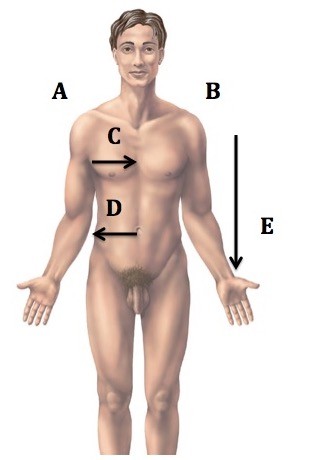The main control of peripheral resistance occurs in the
A) artery.
B) arteriole.
C) capillary.
D) venule.
E) vein.
B
You might also like to view...
Calcitriol is
A) used to increase blood calcium levels. B) produced in response to PTH. C) a steroid. D) a form of vitamin D. E) All of the answers are correct.
Given the following parameters: blood capillary pressure at arteriolar end of tissue capillaries: 35 mm Hg; blood capillary pressure at venule end of tissue capillaries: 15 mm Hg blood-colloid osmotic pressure: 22 mm Hg interstitial-fluid hydrostatic pressure: 1 mm Hg interstitial-fluid-colloid osmotic pressure: 0 mm Hg; what would the reabsorption pressure be?
a. 6 mm Hg b. 7 mm Hg c. 8 mm Hg d. 10 mm Hg e. 22 mm Hg
 Directional terms are important in the study of anatomy. What does "E" represent?
Directional terms are important in the study of anatomy. What does "E" represent?
A. Right B. Median C. Inferior D. Lateral E. Left
Potentially damaging stimuli that result in pain are selectively detected by:
A) photoreceptors. B) nociceptors. C) chemoreceptors. D) proprioceptors.